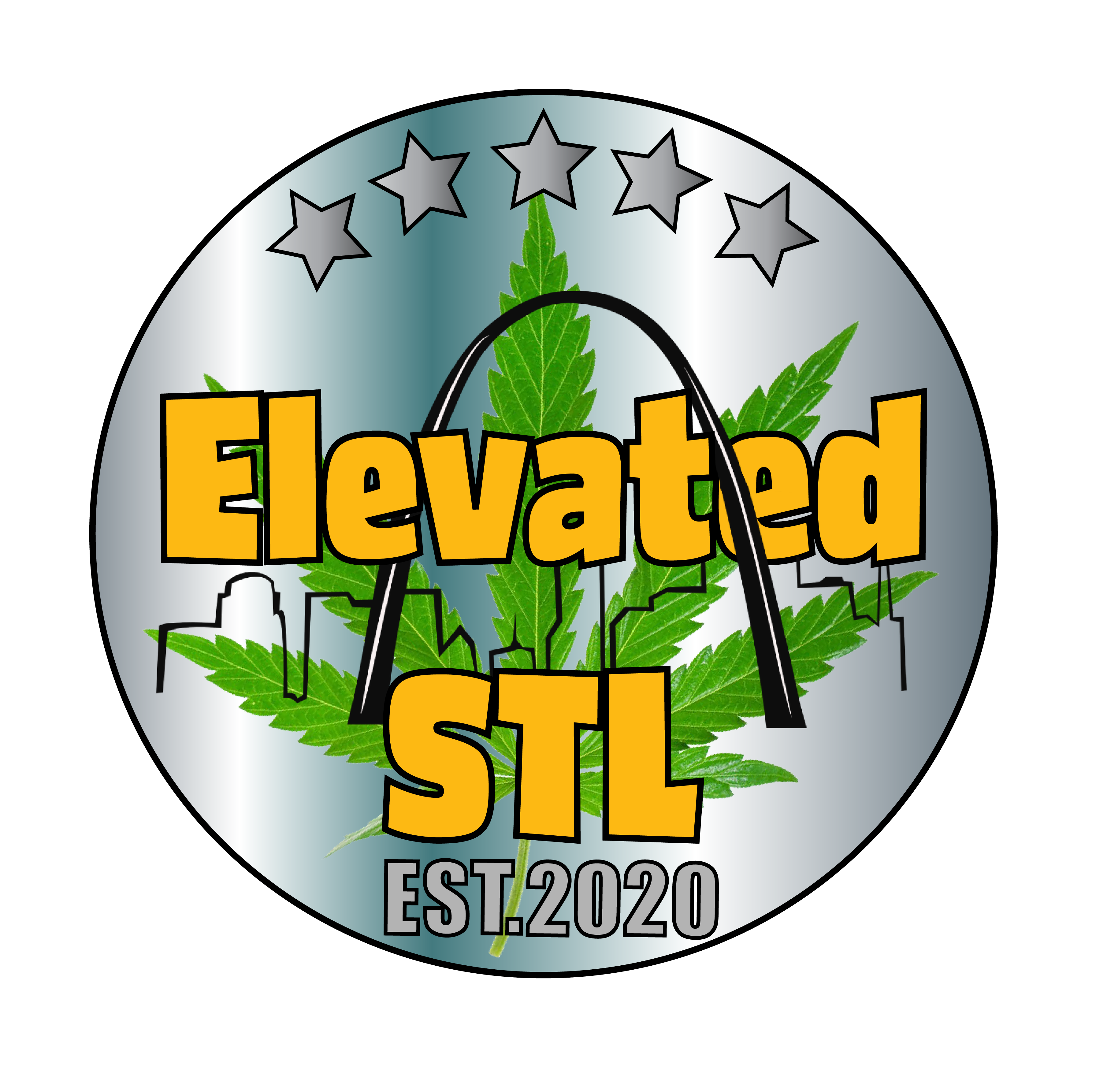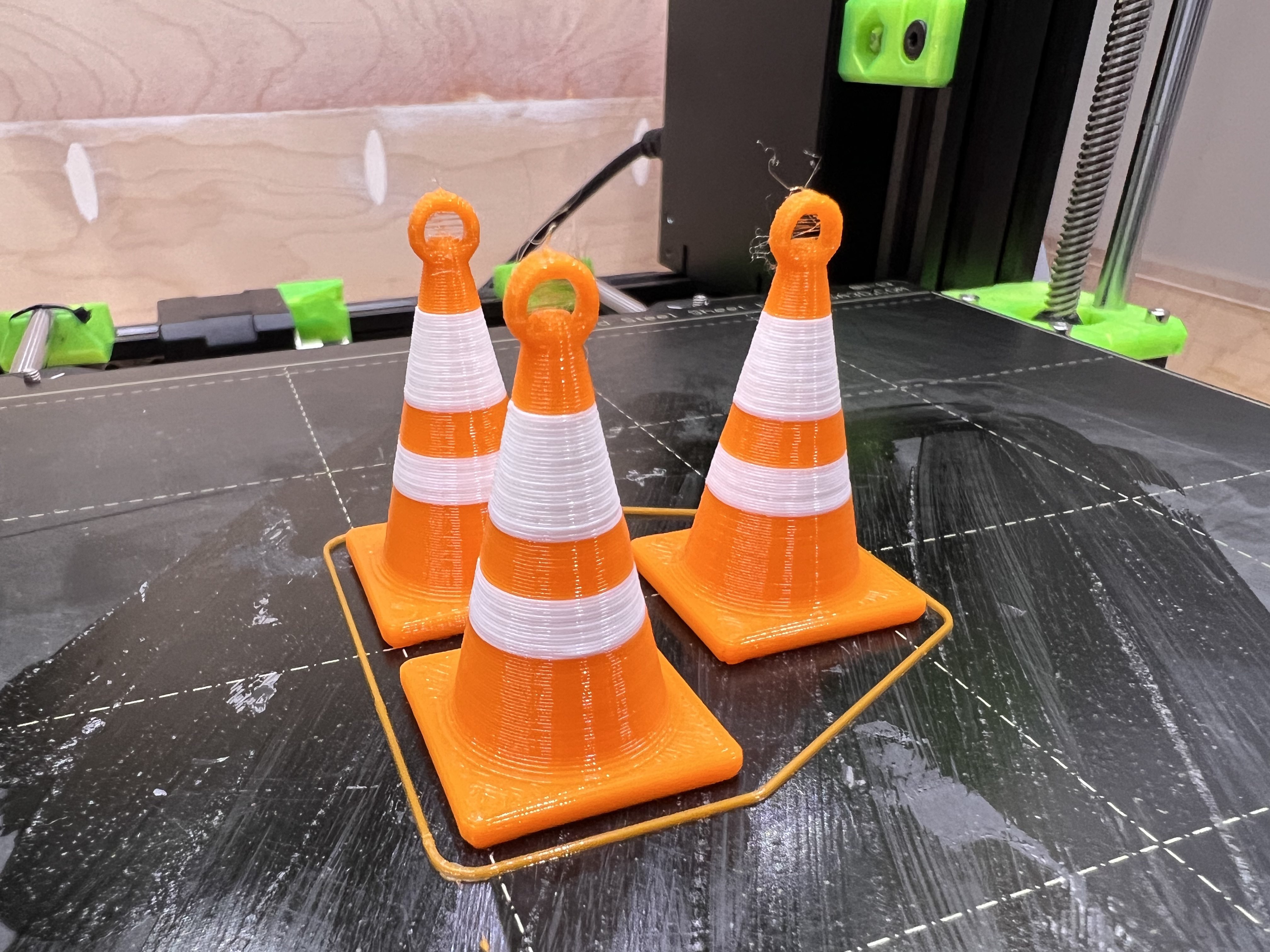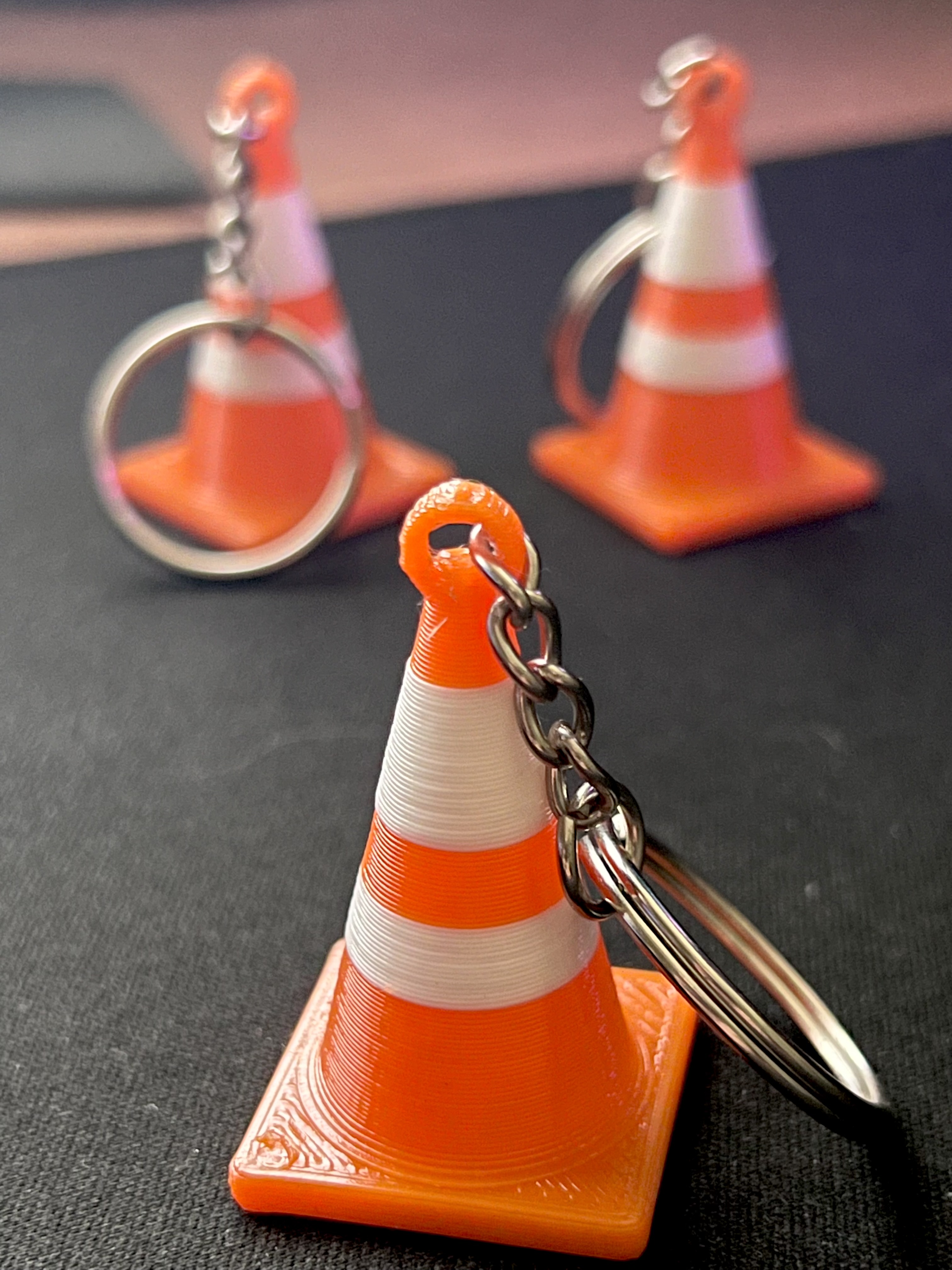STL Traffic: Mastering The Metro's Commute
Navigating the daily grind of city life often brings one universal challenge: traffic. For residents and visitors alike, understanding the intricate dance of vehicles on the roadways is crucial for a smooth journey. In the heart of the Midwest, STL traffic presents its own unique set of complexities, influenced by everything from major sporting events to sudden weather changes.
Whether you're a long-time St. Louisan or planning your first visit, deciphering the rhythm of the city's arteries can save you time, stress, and frustration. This comprehensive guide delves into the nuances of St. Louis traffic, offering insights, practical tips, and valuable resources to help you master your commute and truly experience all that the vibrant St. Louis metropolitan area has to offer.
Table of Contents
- Understanding the Pulse of STL Traffic
- Peak Hours and Problem Zones: Where and When to Expect Delays
- The Impact of Weather and Events on STL Traffic
- Leveraging Technology for a Smoother Commute
- Public Transportation and Alternative Commuting Options in St. Louis
- Future Outlook: Addressing STL Traffic Challenges
- Tips for Visitors and Newcomers Navigating STL Traffic
- Community Insights: What St. Louisans Say About Their Roads
Understanding the Pulse of STL Traffic
St. Louis, often referred to simply as "STL," is an independent city in the U.S., serving as the cultural and economic heart of a sprawling metropolitan area that extends into both Missouri and Illinois. Its unique geographical position, nestled at the confluence of major rivers and crisscrossed by several interstate highways, inherently shapes its traffic patterns. Unlike some grid-based cities, St. Louis's road network can feel like a complex web, with downtown density quickly giving way to suburban sprawl.
- Funny Quotes By Adam Sandler
- Julia Louis Dreyfus Soles
- Bhad Bhabie Pussy
- Rich Shertenlieb
- Catherine Herridge
The daily rhythm of STL traffic is a dynamic entity, influenced by the ebb and flow of commuters, the constant movement of goods, and the occasional unexpected incident. Understanding this pulse means recognizing that while there are predictable patterns, flexibility and access to real-time information are your best allies. Local news outlets, particularly reliable sources like www.stltoday.com, play a crucial role in delivering accuracy and understanding through storytelling, revealing context and humanity in the daily commute. They provide comprehensive coverage of St. Louis news, weather, and sports, all of which can directly impact how traffic flows across the region.
Peak Hours and Problem Zones: Where and When to Expect Delays
Like any major urban center, St. Louis experiences distinct peak traffic hours. Generally, the morning rush typically runs from 6:30 AM to 9:00 AM, while the afternoon/evening commute stretches from 3:30 PM to 6:30 PM. During these times, major interstates and arterial roads can become congested, significantly extending travel times. Understanding these patterns is the first step in mitigating the impact of STL traffic on your day.
Several key roadways are notorious for congestion. Interstate 70, particularly through the downtown area and heading towards St. Louis Lambert International Airport, is a frequent bottleneck. Similarly, Interstate 44 and Interstate 64 (also known as U.S. Route 40), especially where they converge or pass through dense commercial zones, can see significant slowdowns. The outer belt of Interstate 270, while designed to bypass the city, often experiences its own share of congestion, particularly at its interchanges with other major interstates. For up-to-the-minute details on these areas, residents and visitors frequently turn to sources like www.stltoday.com, which serves the St. Louis metropolitan area with breaking news, weather, and traffic updates.
Navigating Major Intersections and Bridges
Bridges connecting Missouri and Illinois are critical components of the St. Louis road network and are often major choke points. The Poplar Street Bridge, a vital link for I-55, I-64, and I-70 traffic crossing the Mississippi River, is perhaps the most famous for its congestion. The Stan Musial Veterans Memorial Bridge offers an alternative for I-70 traffic, often providing some relief, but it too can experience heavy volume. Understanding the flow of these bridges and having alternative routes in mind can be a game-changer during peak times or incidents. Furthermore, complex interchanges like the "Big Bend" where I-44 and I-270 meet, or the various junctions around downtown, require drivers to be alert and plan their lane changes well in advance.
The Impact of Weather and Events on STL Traffic
St. Louis weather is famously unpredictable, and its impact on STL traffic cannot be overstated. Heavy rainfall can quickly lead to slick roads and reduced visibility, while winter storms bringing snow and ice can bring the entire metropolitan area to a crawl. School closings, often announced via local reports for Missouri and Illinois, are a clear indicator of severe weather conditions that will drastically alter traffic patterns as parents adjust their schedules. Checking the radar and local forecasts on www.stltoday.com is an essential pre-commute ritual for many St. Louisans.
Beyond the weather, major events significantly disrupt the flow of traffic. St. Louis is a passionate sports town, home to the Cardinals (baseball) and the Blues (hockey). Game nights, especially for highly anticipated matchups, cause considerable congestion around Busch Stadium and the Enterprise Center. For instance, the enthusiasm for the St. Louis Blues, as evidenced by discussions on forums like stltoday.com's Cards Talk forum, often translates into heavy traffic before and after games. Similarly, large concerts, conventions, or downtown festivals can lead to road closures and detours, requiring drivers to plan alternative routes and allow for extra travel time. The "Women’s sports bar coming to STL soon" mentioned in community discussions also highlights the ever-evolving entertainment landscape that can draw crowds and affect local traffic.
Leveraging Technology for a Smoother Commute
In the digital age, navigating STL traffic without the aid of technology would be akin to sailing without a compass. Modern navigation applications have become indispensable tools for commuters, providing real-time traffic updates, estimated travel times, and alternative route suggestions. Apps like Google Maps, Waze, and Apple Maps utilize crowdsourced data and official traffic reports to give you the most current picture of road conditions, helping you avoid unexpected delays caused by accidents or sudden congestion. These tools are particularly useful for predicting how long it might take to travel right up until an important event, such as a draft, or for planning a trip that involves crossing the city.
Beyond mapping applications, many local media outlets and transportation authorities offer dedicated apps or web pages for traffic monitoring. These resources often provide live camera feeds, incident reports, and construction updates that are specific to the St. Louis metropolitan area, offering a granular level of detail that generic navigation apps might miss. The key is to integrate these technological aids into your daily routine, checking them before you leave and even during your journey if you're stuck in an unexpected slowdown.
Real-Time Updates and Local Resources
For the most authoritative and localized information, turning to established St. Louis news sources is paramount. www.stltoday.com is a prime example, serving as a comprehensive hub for breaking news for St. Louis, Missouri, covering weather, traffic, crime, sports, entertainment, politics, and more. Their local reports for Missouri and Illinois provide invaluable insights into current road conditions, school closings, and election results, all of which can influence traffic. Additionally, many communities within the St. Louis area offer emergency notification systems that can alert you by phone, text, or email in the event of an emergency, which often includes major road closures or hazards. Subscribing to these services can provide critical, timely information that helps you reroute or delay your travel plans, ensuring your safety and efficiency on the roads.
Public Transportation and Alternative Commuting Options in St. Louis
While many St. Louisans rely on personal vehicles, the city offers a robust public transportation system that can be an excellent alternative for navigating STL traffic. MetroLink, the region's light rail system, provides a convenient and often faster way to travel between key areas, including downtown, Forest Park, and St. Louis Lambert International Airport. Its dedicated tracks mean it bypasses road congestion entirely, making it a reliable option for daily commutes or special events. Complementing MetroLink, the MetroBus system offers extensive routes throughout the city and county, providing access to areas not served by the rail line. Utilizing public transport not only reduces individual stress but also contributes to alleviating overall traffic volume and reducing carbon emissions.
Beyond traditional public transit, other alternative commuting options are gaining traction. Ridesharing services offer on-demand transportation, which can be useful for one-off trips or when parking is a significant concern. For those living closer to their workplaces or within bike-friendly neighborhoods, cycling can be a healthy and environmentally conscious choice, though St. Louis's hilly terrain and varying infrastructure require careful route planning. Exploring these alternatives can significantly enhance your commuting experience and offer flexibility when road conditions are challenging.
St. Louis Lambert International Airport (STL) Ground Transportation
For travelers flying into or out of St. Louis, understanding ground transportation options at St. Louis Lambert International Airport (STL) is crucial for a seamless journey. The airport website provides comprehensive information on flight schedules, parking, ground transportation, shopping, dining, and other services. MetroLink offers direct service from both airport terminals to downtown St. Louis and beyond, making it an efficient choice for avoiding potential traffic delays on the roadways leading to and from the airport. Taxis, ride-sharing services, and various shuttle providers also offer convenient ways to reach your destination. Planning your airport transfer in advance, considering both your flight schedule and anticipated STL traffic conditions, is always recommended to ensure you arrive with ample time.
Future Outlook: Addressing STL Traffic Challenges
Addressing the complexities of STL traffic is an ongoing endeavor for city planners and transportation authorities. As St. Louis City, an independent city in the U.S., continues to grow and evolve, so too do the demands on its infrastructure. Ongoing projects, from bridge repairs and road widening to the implementation of smart traffic light systems, are continuously being planned and executed to improve flow and reduce congestion. These efforts aim to enhance the efficiency of the existing road network and accommodate future growth in the St. Louis metropolitan area.
Urban planning plays a pivotal role in shaping the future of traffic. Strategies such as promoting mixed-use developments, encouraging walkability and bikeability, and expanding public transportation networks are all part of a broader vision to create a more sustainable and less car-dependent city. While these changes take time, the commitment to improving transportation infrastructure reflects a forward-thinking approach to managing the challenges posed by increasing traffic volumes. Staying informed about these developments through local news and community updates can give residents a better understanding of the long-term outlook for their commutes.
Tips for Visitors and Newcomers Navigating STL Traffic
For those new to the area or just visiting, navigating STL traffic can initially seem daunting. St. Louis offers a wealth of attractions, from the iconic Gateway Arch to vibrant neighborhoods, and a well-planned itinerary can help you make the most of your time without getting bogged down in congestion. Our visitors guide can help you discover the best hotels, restaurants, and attractions, and integrating traffic awareness into your planning will enhance your experience significantly. Remember that the city's layout, with its mix of downtown density, river crossings, and sprawling suburbs, requires a different approach than a purely grid-based city.
Essential Planning for St. Louis Travel
Before heading out, always check current traffic conditions using a reliable app or local news source like www.stltoday.com. This is especially important if you're traveling during peak hours or to an area known for events. If you plan to visit popular attractions like Forest Park or the Delmar Loop, consider using MetroLink or ride-sharing services to avoid parking hassles and traffic delays. Familiarize yourself with the major interstates and their typical flow, but also be aware of alternative routes on surface streets, which can sometimes be faster during heavy congestion. Maps, details, and contact info for community groups and parks are often available online, helping you plan routes that are both scenic and efficient. Being prepared and flexible is key to a stress-free travel experience in St. Louis.
Community Insights: What St. Louisans Say About Their Roads
The daily experience of STL traffic is a shared reality for countless residents, and these experiences are often discussed and debated in local forums and community spaces. Online platforms, such as stltoday.com's Cards Talk forum, while primarily focused on sports discussions for fans of the St. Louis Cardinals and Blues, also serve as a vibrant digital town square where members occasionally touch upon the frustrations and challenges of navigating the city's roads. With a total of 776,839 posts, 3,622 topics, and 1,741 members (including recent additions like "stl star"), these forums reflect the collective pulse of the St. Louis community, including their daily commutes.
While specific traffic-related threads might not dominate discussions like sports ("reschny is like the ultimate blues type of player so I see where you are going with it," or "Honestly, they could definitely use Hofer"), the underlying sentiment about infrastructure, road conditions, and the need for improvements often surfaces. Comments like "Problem is, don't think they can afford him. Not at a salary that STL wouldn't match saw another article a week or so ago saying how," while about player contracts, subtly echo broader concerns about resource allocation that can apply to public works projects. These community discussions, moderated by Stltoday forum moderators and Cards Talk moderators, offer a unique, unfiltered glimpse into the lived experiences of St. Louisans and their relationship with the city's transportation network, emphasizing the human element behind the statistics and traffic reports.
Conclusion
Navigating STL traffic is an integral part of life in the St. Louis metropolitan area. While it presents its share of challenges, from peak hour congestion to the unpredictable impacts of weather and major events, understanding these dynamics is the first step towards a smoother, more efficient commute. By leveraging technology, exploring public transportation options, and staying informed through reliable local sources like www.stltoday.com, you can significantly reduce the stress and time spent on the road.
Ultimately, mastering St. Louis traffic is about preparedness, flexibility, and making informed choices. Whether you're a long-time resident or a new visitor, applying these strategies will not only enhance your daily travels but also allow you to fully appreciate the rich culture, vibrant sports scene, and welcoming community that St. Louis has to offer. We encourage you to share your own tips and experiences in the comments below, and always remember to check local reports before you hit the road. Safe travels, St. Louis!
- Is Katie Ledecky Trans
- Pokimane Nip Slip
- Are Robert De Niro And Al Pacino Friends
- Julia Louis Dreyfus Soles
- Megan Thee Stallion Leak

Shop – Elevated STL

Traffic Cone Keychain (STL + STEP) by Eric F | Download free STL model

Traffic Cone Keychain (STL + STEP) by Eric F | Download free STL model